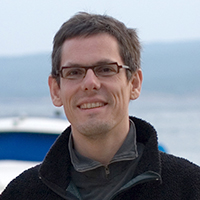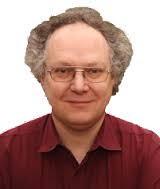- Home
- Objective
- Keynote Speakers
Mohamad Sawan Canada Research Chair in Smart Medical Devices Polystim Neurotechnologies Laboratory Polytechnique Montreal, Canada
Prof. Mohamad Sawan
Fabrice Wendling (PhD) holds a position of Director of Research at INSERM

Prof. fabrice Wendling
Metin Akay is currently the founding chair of the new Biomedical Engineering Department and the John S. Dunn professor of biomedical engineering at the University of Houston

Prof. Miten AKAY
Bart Bijnens

Prof. Bart Bijnens
ICREA Research Professor in the Department of Information and Communication Technologies at Universitat Pompeu Fabra (UPF)
Patrick Flandrin

Prof. Patrick Flandrin
CNRS "Research Director" at École normale supérieure de Lyon
Ghaleb Husseini Professor- AUS Chemical Eng. Department, Sharjah, UAE
 Prof. Ghaleb Husseini
Prof. Ghaleb Husseini
Peter Stadler Algorithms, Computing in Mathematics, Natural Science, Engineering and Medicine, Bioinformatics University of Leipzig ,
 Prof. Peter Stadler
Prof. Peter Stadler- Invited Speakers
- Partner Universities
- Lebanese University, LU, LB
- Saint Joseph University, USJ, LB
- Notre Dame University, NDU, LB
- Rafic Hariri University, RHU, LB
- Islamic Univ. of Lebanon,IUL, LB
- Saint Esprit of Kaslic Univ. USEK, LB
- More...
- Modality and submission
Paper presentation and submission

The conference will consist of oral presentations of fifteen minutes with few plenary sessions. All submitted papers will be peer reviewed. Accepted papers will be published as a collective work in an electronic format and will be submitted for inclusion to IEEE Xplore
Fadi Karameh
Full Professor in Robotics and Mechatronics, Polytech-Lille, University of Lille1
Title: Towards adding richer dynamics of neural population activity in modeling of brain rhythms: a nonlinear estimation-based approach.
Abstract:
The electroencephalogram is an average recording of brain electric potentials that, despite its limited spatial resolution, continues to provide a real-time window into the underlying brain dynamics. It, therefore, comes with a unique set of advantages, and challenges, when used to model and understand brain rhythms. On the one hand, detailed models of single cells, ubiquitous in computational neuroscience, are often tuned to result in nonlinear, time varying dynamics. On the other hand, average models of activity in neural populations, popular in clinical applications, are often approximately tuned to macroscale recordings (EEG, fMRI) with basic nonlinearities and time-invariant dynamics. In this talk I will discuss our recent efforts to introduce more detailed laminar population activity models with known connection topologies and dynamics. It is seen that, with the ensuing increase in dynamic richness, the principal challenge of identifying model parameters from macroscale recordings can be approached with new Kalman-based estimation techniques that allow for identifying nonlinear, time-varying dynamics.
Biography:
Fadi N Karameh is an Associate Professor in the Electrical and Computer Engineering Department at the American University of Beirut (AUB) in Beirut, Lebanon. Prof Karameh joined AUB in 2003 shortly after graduating from the Laboratory of Information and Decision Systems at the Massachusetts Institute of Technology (MIT) in Cambridge, USA. With an emphasis on neurophysiological signals and systems, his interdisciplinary research brings together detailed understanding of cellular mechanisms in the area of computational neuroscience and system-theoretic approaches in identification, estimation and signal processing in the area of electrical engineering. His current efforts use EEG recordings for the analysis, detection and modeling of the initiation and propagation of stimulus-induced therapeutic seizures in cortical networks.
- Keynote Speakers









 Mohamad Sawan
Mohamad Sawan